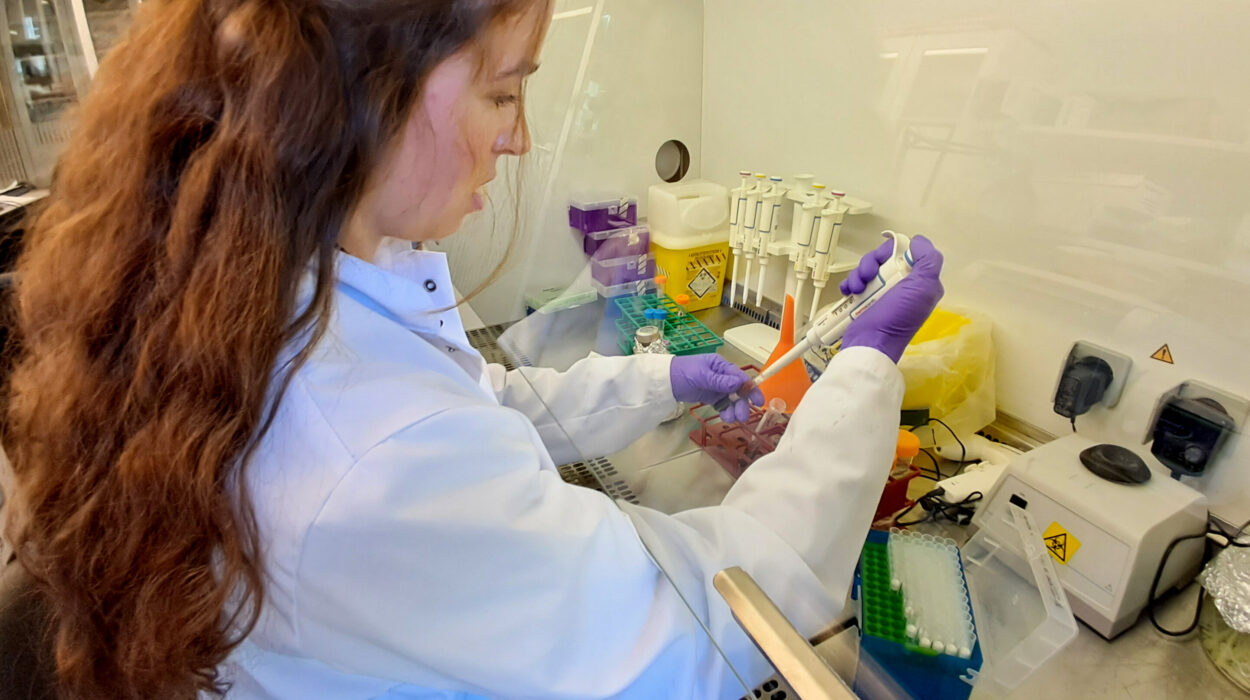The human stomach is a remarkable organ. Day after day, it churns, digests, and processes the food that sustains life, all while bathing in powerful acids strong enough to break down meat and kill harmful bacteria. This delicate organ is protected by a thin layer of mucus, a natural shield that prevents the stomach from digesting itself. But sometimes, this balance falters. The protective lining weakens or is disrupted, and acid begins to irritate or inflame the tissue beneath. This condition is known as gastritis.
Gastritis is not merely a medical term; it is an experience felt by millions worldwide—a burning sensation after a meal, a gnawing pain at night, or an unsettling fullness that refuses to fade. For some, it is a fleeting annoyance. For others, it becomes a chronic companion, altering appetite, mood, and quality of life. To understand gastritis is to delve into the intricate relationship between the body, lifestyle, microbes, and medicine.
What Exactly is Gastritis?
In simple terms, gastritis refers to inflammation of the stomach’s inner lining. This inflammation can be acute (sudden and short-lived) or chronic (developing gradually and persisting over time). While the term itself is broad, the underlying processes can vary greatly, ranging from mild irritation to severe damage that erodes the lining and leads to ulcers or even bleeding.
The severity of gastritis depends on multiple factors: the strength of the stomach’s defense mechanisms, the degree of acid exposure, the presence of infectious agents, and the influence of lifestyle habits such as diet, alcohol consumption, and stress. Though common, gastritis is far from uniform, and every case has its own story.
Causes of Gastritis: Unraveling the Triggers
The causes of gastritis are as diverse as human lives themselves. Some people develop gastritis suddenly after taking certain medications, while others develop it slowly due to chronic infections or lifestyle factors.
Helicobacter pylori: The Unseen Culprit
One of the most common causes of gastritis worldwide is infection by the bacterium Helicobacter pylori (H. pylori). This spiral-shaped microorganism has a unique ability to survive in the harsh acidic environment of the stomach. It does so by burrowing into the mucus lining and neutralizing stomach acid around itself. Over time, the body’s immune response to H. pylori leads to chronic inflammation, damaging the lining.
H. pylori infection is astonishingly common, affecting more than half of the world’s population. Yet not everyone infected develops gastritis. Genetics, diet, stress, and environmental factors determine whether the bacteria remain harmless or trigger disease.
Medications and Gastritis
Another frequent cause lies in the medicines many rely on for pain relief. Nonsteroidal anti-inflammatory drugs (NSAIDs)—such as ibuprofen, aspirin, and naproxen—are widely used but notorious for irritating the stomach lining. These drugs reduce the production of prostaglandins, substances that help maintain the stomach’s protective mucus barrier. Without this shield, acid can injure the tissue directly.
Alcohol and Irritants
Excessive alcohol consumption weakens the mucus lining and increases acid production, creating the perfect storm for gastritis. Similarly, irritants like spicy foods, highly acidic diets, or toxic substances can contribute to inflammation, though these factors are often secondary compared to infection or medication.
Autoimmune Gastritis
In some individuals, the immune system itself mistakenly attacks the stomach’s lining, leading to autoimmune gastritis. This condition is particularly concerning because it can damage cells responsible for producing intrinsic factor, a protein vital for vitamin B12 absorption. Left unchecked, this can lead to pernicious anemia and neurological complications.
Stress and Critical Illness
Severe physical stress, such as that caused by surgery, burns, or traumatic injury, can also trigger gastritis. Known as stress-induced gastritis, this form arises when the body’s natural protective mechanisms are overwhelmed, leaving the stomach vulnerable to acid damage.
Symptoms of Gastritis: Listening to the Body’s Signals
Gastritis speaks through symptoms that can range from subtle discomfort to alarming pain. However, it is important to note that some individuals may experience no symptoms at all, particularly in chronic cases.
Common Symptoms
The most frequently reported symptoms include:
- A burning or gnawing pain in the upper abdomen, often described as hunger-like or aching.
- Nausea and vomiting, which may sometimes contain traces of blood if the lining is severely eroded.
- A feeling of fullness or bloating, especially after eating even small amounts.
- Loss of appetite, which may lead to unintended weight loss.
- Indigestion, marked by burping, belching, and acid reflux.
Severe Symptoms
In more advanced or untreated cases, gastritis can cause more serious signs:
- Vomiting blood (hematemesis), which may appear bright red or like coffee grounds.
- Black, tarry stools, indicating gastrointestinal bleeding.
- Severe abdominal pain radiating to the back.
These symptoms warrant immediate medical attention, as they may indicate complications such as ulcers or internal bleeding.
The Diagnostic Journey: How Gastritis is Identified
Because gastritis shares symptoms with many other digestive disorders, accurate diagnosis is essential. Physicians rely on a combination of medical history, physical examination, and diagnostic tests to uncover the root cause.
Medical History and Examination
A doctor will begin by asking about symptoms, lifestyle habits, medications, and family history. A physical exam may include gentle pressure on the abdomen to identify tenderness or pain.
Endoscopy: Seeing the Stomach Directly
The most definitive test for gastritis is upper gastrointestinal endoscopy. In this procedure, a flexible tube with a tiny camera is inserted through the mouth and down into the stomach. This allows direct visualization of the lining and the collection of small tissue samples (biopsies) for laboratory analysis.
Testing for H. pylori
Several methods exist to detect H. pylori infection:
- Urea breath test: Patients ingest a substance that H. pylori breaks down, releasing detectable gases.
- Stool antigen test: Detects bacterial proteins in feces.
- Blood test: Identifies antibodies, though less reliable for current infections.
Imaging and Blood Work
X-rays or CT scans may be used in certain cases to rule out other conditions, while blood tests can reveal anemia from chronic bleeding or low vitamin B12 levels due to autoimmune gastritis.
Treatment of Gastritis: Restoring Balance
The treatment of gastritis depends on its underlying cause. Fortunately, modern medicine offers a wide range of effective strategies.
Eliminating the Root Cause
If H. pylori infection is detected, doctors usually prescribe a combination of antibiotics along with acid-suppressing medications to eradicate the bacteria and allow the stomach lining to heal. This regimen is highly effective but requires strict adherence to prevent antibiotic resistance.
For gastritis caused by NSAIDs or alcohol, the first step is often discontinuing or reducing these substances. Sometimes switching to alternative medications can resolve the inflammation.
Acid Suppression Therapy
Acid plays a central role in gastritis, so reducing its production is key to healing. Medications include:
- Proton pump inhibitors (PPIs), such as omeprazole or pantoprazole, which block acid secretion.
- H2 receptor blockers, such as ranitidine or famotidine, which reduce acid output.
- Antacids, which provide quick relief by neutralizing existing acid.
Protective and Healing Agents
Some drugs, like sucralfate, coat the stomach lining and create a barrier against acid. Others, like misoprostol, mimic prostaglandins to enhance mucus protection.
Lifestyle Adjustments
Beyond medications, lifestyle changes are critical:
- Eating smaller, more frequent meals instead of large heavy portions.
- Avoiding alcohol, smoking, and foods that trigger symptoms.
- Managing stress through relaxation techniques, mindfulness, or therapy.
- Ensuring adequate sleep and hydration to support overall healing.
Treating Autoimmune Gastritis
For autoimmune cases, treatment often involves vitamin B12 injections to correct deficiency and regular monitoring for complications such as anemia or gastric cancer.
Complications of Gastritis: When Inflammation Persists
While many cases of gastritis resolve with treatment, untreated or chronic inflammation can lead to serious complications.
- Peptic ulcers: Open sores that develop when acid erodes deeper layers of the stomach or duodenum.
- Bleeding: Chronic irritation can cause erosions that bleed, sometimes silently over time.
- Anemia: Repeated bleeding or impaired nutrient absorption can result in iron or B12 deficiency.
- Stomach cancer: Chronic H. pylori infection and autoimmune gastritis increase the risk of gastric cancer, making early detection vital.
Gastritis and Quality of Life
Though gastritis may seem like a simple stomach problem, its effects ripple into daily life. Persistent pain and discomfort can erode appetite, disrupt sleep, and increase stress levels. Social life and work may be affected, particularly when symptoms flare unpredictably.
For many, gastritis becomes a journey of self-discovery—learning which foods soothe or aggravate, understanding the importance of rest, and appreciating the need to listen to the body. With proper management, gastritis does not have to define one’s life, but it often reshapes the way individuals relate to their health.
Prevention: Guarding the Stomach’s Strength
Prevention of gastritis lies in protecting the stomach’s natural defenses:
- Use NSAIDs cautiously and only as prescribed.
- Limit alcohol consumption and avoid smoking.
- Practice safe food hygiene to reduce H. pylori transmission.
- Manage stress effectively and nourish the body with balanced meals.
In regions where H. pylori is common, public health measures, improved sanitation, and access to healthcare play major roles in prevention.
The Future of Gastritis Management
Science continues to uncover new insights into gastritis. Advances in microbiome research highlight the role of gut bacteria in shaping inflammation and healing. Novel treatments aim to target H. pylori more effectively while reducing antibiotic resistance. Personalized medicine may one day allow treatments tailored to each patient’s genetic profile, microbiome, and lifestyle.
Meanwhile, integrative approaches—combining medical treatment with nutrition, stress reduction, and natural remedies—are gaining recognition. While not replacements for antibiotics or acid suppression, therapies like probiotics, herbal supplements, and dietary adjustments may enhance healing and reduce recurrence.
Living with Gastritis: A Message of Hope
To live with gastritis is to walk a path of awareness. It requires recognizing the body’s signals, seeking proper medical care, and embracing lifestyle changes that promote healing. It is also a reminder that health is not to be taken for granted—the simple act of eating without pain becomes a profound gift.
Though gastritis can be frustrating, painful, and even frightening, it is not insurmountable. With modern medicine, informed choices, and compassionate care, most people find relief and return to a life of energy and joy.
At its heart, the story of gastritis is not just about inflammation—it is about resilience. The stomach, despite its vulnerability, has remarkable powers of recovery. And when given the care it needs, it can heal, reminding us of the body’s incredible capacity to restore balance and vitality.






